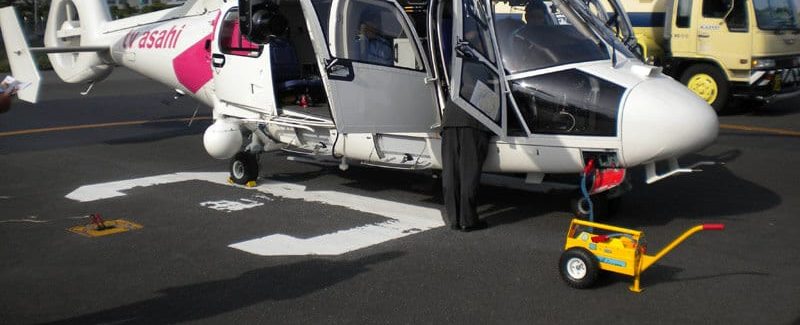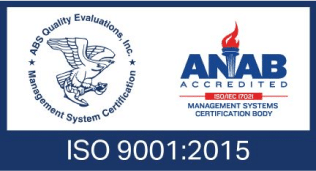
What Is A Minimum Equipment List (MEL)?
So you’re soaring through the clouds, excitement building as your destination nears. Suddenly, a notification flashes on the instrument panel, and your heart skips a beat – an equipment malfunction? Don’t fret!
Enter the Minimum Equipment List (MEL), a meticulous document that often allows flights to proceed safely even with unexpected technical hiccups. Buckle up and prepare for a fascinating journey through the world of the MEL, from its key components to its impact on daily operations.
Key Components of MEL
But what is a minimum equipment list? Well, I can give you a simple analogy right away! Imagine the MEL as a pilot’s essential kit, listing every piece of equipment onboard. But not all equipment holds equal weight. Let’s take a closer look!
Identification of Essential Equipment
The MEL carefully identifies essential equipment deemed critically necessary for safe flight by regulatory bodies and the aircraft operator and manufacturer. Think navigation aids, communication systems, and vital engine components—the absolute must-haves for any flight—that allow professionals to monitor evaluation and learn MEL.
Critical vs. Non-Critical Systems
But what about the rest? The Minimum Equipment List of items categorizes non-essential equipment as non-critical, meaning they contribute to comfort and efficiency but aren’t vital. This allows for some flexibility. Even with non-critical malfunctions, the MEL might allow the flight to proceed under specific conditions or after repairs, always prioritizing safety above all else.
Regulatory Framework and Compliance
The MEL doesn’t operate in a vacuum. It exists within a strict legal framework overseen by regulatory bodies like the FAA or EASA that monitor and evaluate the aircraft industry.
Regulatory Bodies
They set the baseline requirements, ensuring minimum safety standards across the industry. However, airplane owners aren’t simply passive followers; they must meet these airworthiness requirements.
Sometimes, certain airplane owners or pioneers in the aviation industry like to develop their own MELs, which must comply with or be even more restrictive than these guidelines to be FAA-approved, ensuring a tailored approach to safety for specific aircraft types and operational needs, but regular aircraft owners and enthusiasts prefer to rely on external MELs.
Legal Requirements and Obligations for MEL Compliance
But compliance isn’t just about ticking boxes. Anyone who is handling an airplane has legal requirements and obligations to ensure their MELs are up-to-date, readily accessible to pilots, and rigorously followed. This meticulousness is crucial, as the MEL serves as the final authority when determining if a flight can proceed with specific malfunctions.
Application in Aircraft Operations
The MEL isn’t just a dusty document gathering cobwebs. It plays a vital role in daily operations. When equipment malfunctions arise, pilots consult the MEL to determine if the flight can proceed. Think of it as their decision-making guide, outlining limitations, repair requirements, and alternative procedures for operating with non-critical malfunctions.
The Impact of MEL Deviations
Deviations from the Minimum Equipment List, however, are not taken lightly. They require careful justification and thorough documentation, highlighting the importance of responsible application. Pilots must weigh the risks and benefits, ensuring any deviation prioritizes safety and adheres to strict regulations.
Influence on Flight Dispatch and Operation
Not only that, the MEL also acts as a guide for flight dispatchers and pilots when equipment malfunctions occur. If something isn’t working perfectly, the MEL tells the pilots and dispatchers whether it’s safe to fly anyway, with any limitations or repairs needed.
Sometimes, it might mean a slight delay while a minor fix is made. Other times, the flight might be canceled if the issue is more serious. So, the next time you experience a flight delay, remember that the MEL might be playing a vital role behind the scenes, ensuring everyone’s safety remains the top priority.
Approval Processes and Documentation
Making changes to the MEL isn’t like updating your grocery list. Implementing modifications requires a meticulous approval process. Airplane owners must seek approval from regulatory bodies, ensuring any changes adhere to the highest safety standards. This involves rigorous testing, analysis, tracking progress, documentation, building a transparent record of modifications, and safeguarding the MEL’s integrity.
This meticulousness might seem like an administrative burden, but it’s crucial. Transparent documentation allows for proper oversight and maintains confidence in the MEL’s effectiveness, ensuring every flight takes off with a safety net firmly in place.
Variations in MEL for Different Aircraft Types
Not all aircraft are created equal, and neither are their MELs. Different types have unique configurations and systems, necessitating tailored MELs specific to their needs. Pilots must be thoroughly familiar with the specific MEL applicable to their aircraft, enabling them to make informed decisions in case equipment malfunctions. It’s like learning the dialect of each aircraft they fly, ensuring they can navigate any technical hiccup with confidence.
Challenges and Considerations in MEL Management
Managing and utilizing the MEL effectively comes with its own set of challenges. Airplane owners must constantly balance operational efficiency (getting flights out on time) with safety imperatives (never compromising passenger safety). They must navigate complex regulations, ensure clear communication with pilots, and continuously train them on how to master Minimum Equipment List procedures. It’s a tightrope walk, demanding constant vigilance and adaptation.
If you have any further inquiries or would like to explore additional aspects of the aviation industry such as ground power units, feel free to contact us.
To Recap…
The rewards are immeasurable once you understand “what is MEL?”. By effectively managing the MEL, airplane owners ensure the smooth and safe operation of their fleet, even when faced with unexpected technical hiccups. It’s a testament to the dedication and meticulous planning that go into every flight, keeping countless passengers soaring through the skies with peace of mind.




